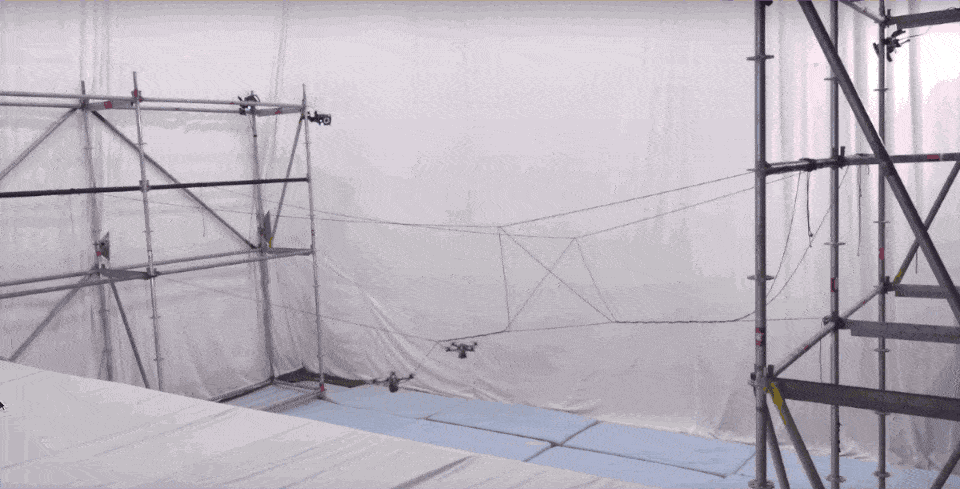Drones are often feared as instruments of destruction, and as John Oliver pointed out, in some parts of the world, people fear blue skies because that’s when the drones strike. But this technology isn’t only used to destroy – it can also be used to create, as demonstrated by these very efficient quadrocopters building a rope bridge.
Flying machines, by definition, offer a big advantage over traditional construction machines: they can fly and reach basically any desired point, flying in and about them. Tensile structures fit very well with this characteristic, and researchers, as researchers from ETH Zurich have shown. As seen in the video below, the bridge was entirely built by the flying machines. Every knot and braid in the 7.4 meter (just over 24 feet) bridge was tied by the UAVs (unmanned aerial vehicles) using Dyneema rope, a strong, resilient variety of rope – the bridge can easily carry a man. The technology could be replicated for larger bridges.
Aerial construction requires UAVs to physically interact with their environment, and in this case, the room was outfitted with motion capture devices that offer positional measurements which were then fed back to the drones. In a real case scenario, the drones would interact with their environment as well as with humans, and so far, this works as a great proof of concept.
I could definitely see it implemented in remote areas or areas struck by disaster in which a quick way of access needs to be improvised. Hopefully, drones will one day become an image of salvation, not of destruction.










